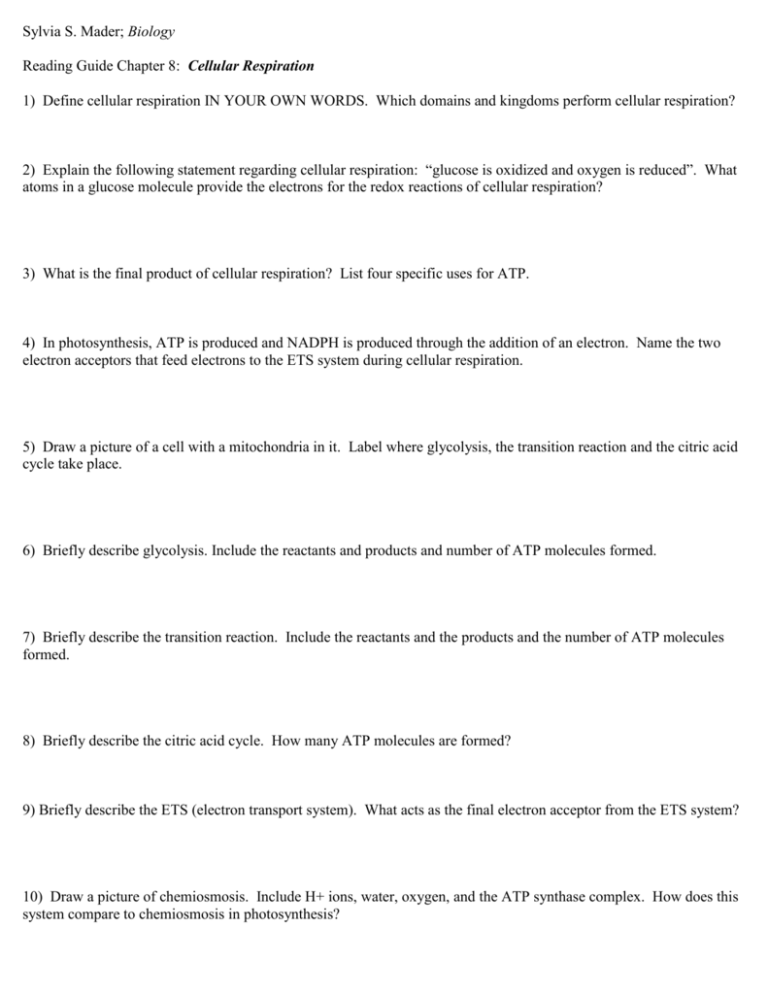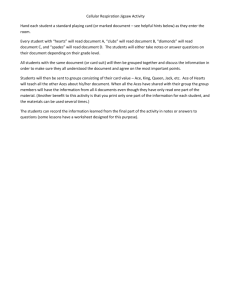Sylvia S
advertisement

Sylvia S. Mader; Biology Reading Guide Chapter 8: Cellular Respiration 1) Define cellular respiration IN YOUR OWN WORDS. Which domains and kingdoms perform cellular respiration? 2) Explain the following statement regarding cellular respiration: “glucose is oxidized and oxygen is reduced”. What atoms in a glucose molecule provide the electrons for the redox reactions of cellular respiration? 3) What is the final product of cellular respiration? List four specific uses for ATP. 4) In photosynthesis, ATP is produced and NADPH is produced through the addition of an electron. Name the two electron acceptors that feed electrons to the ETS system during cellular respiration. 5) Draw a picture of a cell with a mitochondria in it. Label where glycolysis, the transition reaction and the citric acid cycle take place. 6) Briefly describe glycolysis. Include the reactants and products and number of ATP molecules formed. 7) Briefly describe the transition reaction. Include the reactants and the products and the number of ATP molecules formed. 8) Briefly describe the citric acid cycle. How many ATP molecules are formed? 9) Briefly describe the ETS (electron transport system). What acts as the final electron acceptor from the ETS system? 10) Draw a picture of chemiosmosis. Include H+ ions, water, oxygen, and the ATP synthase complex. How does this system compare to chemiosmosis in photosynthesis? 11) After CO2 is produced as a byproduct in cellular respiration, what are the steps required to remove it from the cell, transport it and exhale it out of the body? 12) Draw and label a picture of the mitochondria including where the steps of cellular respiration are performed. 13) Why is the cristae folded? 14) What is oxidative phosphorylation? How does this term relate to chemiosmosis? What is photophosphorylation? How does this term relate to chemiosmosis? 15. How efficient is cellular respiration? What percentage of energy is lost in the form of heat? What is the efficiency rate of fermentation? 16. What is fermentation? Describe a condition when fermentation would be primary source of ATP energy in humans? 17. Differentiate between the term catabolism and anabolism. Which tend to be exergonic? Endergonic?







